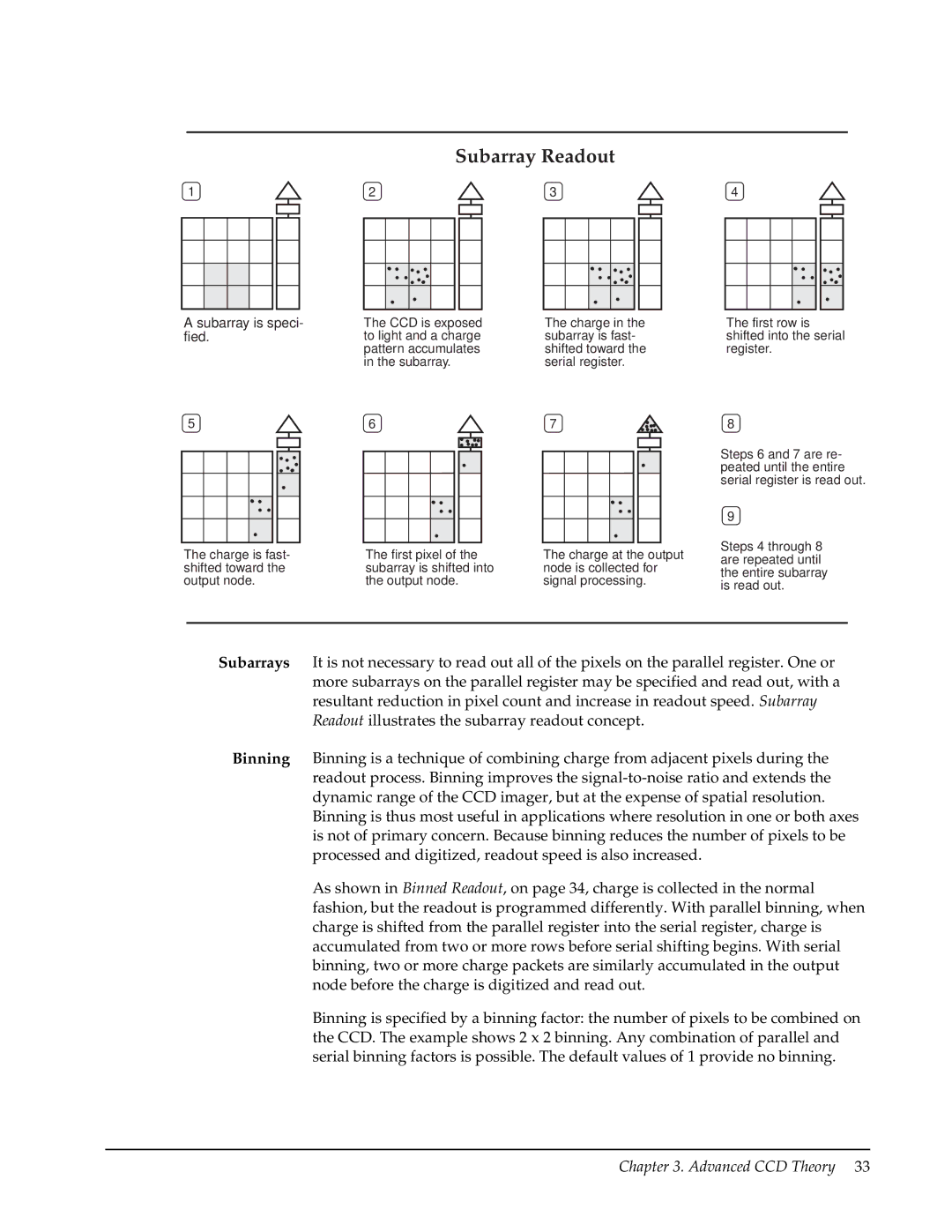
1
Subarray Readout
2 | 3 | 4 |
A subarray is speci- fied.
5
The charge is fast- shifted toward the output node.
The CCD is exposed to light and a charge pattern accumulates in the subarray.
6
The first pixel of the subarray is shifted into the output node.
The charge in the subarray is fast- shifted toward the serial register.
7
The charge at the output node is collected for signal processing.
The first row is shifted into the serial register.
8
Steps 6 and 7 are re- peated until the entire serial register is read out.
9
Steps 4 through 8 are repeated until the entire subarray is read out.
Subarrays It is not necessary to read out all of the pixels on the parallel register. One or more subarrays on the parallel register may be specified and read out, with a resultant reduction in pixel count and increase in readout speed. Subarray Readout illustrates the subarray readout concept.
Binning Binning is a technique of combining charge from adjacent pixels during the readout process. Binning improves the
Binning is thus most useful in applications where resolution in one or both axes is not of primary concern. Because binning reduces the number of pixels to be processed and digitized, readout speed is also increased.
As shown in Binned Readout, on page 34, charge is collected in the normal fashion, but the readout is programmed differently. With parallel binning, when charge is shifted from the parallel register into the serial register, charge is accumulated from two or more rows before serial shifting begins. With serial binning, two or more charge packets are similarly accumulated in the output node before the charge is digitized and read out.
Binning is specified by a binning factor: the number of pixels to be combined on the CCD. The example shows 2 x 2 binning. Any combination of parallel and serial binning factors is possible. The default values of 1 provide no binning.
